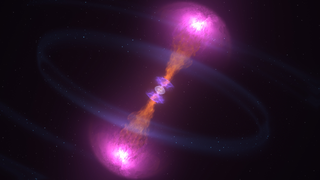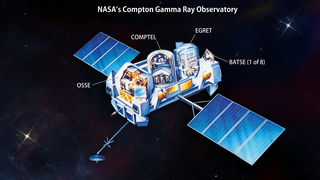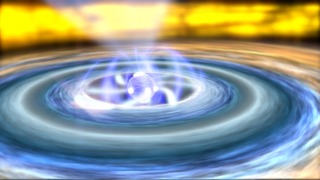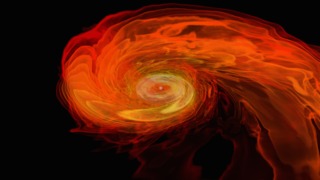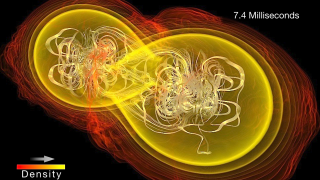Universe
ID: 14209
Astronomers studying archival observations of powerful explosions called short gamma-ray bursts (GRBs) have detected light patterns indicating the brief existence of a superheavy neutron star shortly before it collapsed into a black hole. This fleeting, massive object likely formed from the collision of two neutron stars.
Astronomers looked for these signals in 700 short GRBs detected with NASA’s Neil Gehrels Swift Observatory, Fermi Gamma-ray Space Telescope, and the Compton Gamma Ray Observatory. They found these flickering gamma-ray patterns – called quasiperiodic oscillations – in two bursts observed by Compton’s Burst And Transient Source Experiment (BATSE) on July 11, 1991, and Nov. 1, 1993. The larger area of the BATSE instrument gave it the upper hand in finding these faint patterns.
A neutron star forms when the core of a massive star runs out of fuel and collapses. This produces a shock wave that blows away the rest of the star in a supernova explosion. Neutron stars typically pack more mass than our Sun into a ball about the size of a city, but above a certain mass, they must collapse into black holes.
Merging neutron stars power short GRBs, blasts of high-energy light that last less than two seconds. Computer simulations of gravitational waves emitted by these mergers show a sudden jump in frequency – exceeding 1,000 hertz – as the objects coalesce. These signals are too fast and faint for existing gravitational wave observatories to detect. But astronomers reasoned that similar signals could appear in the gamma-ray emission from short GRBs.
Both the Compton data and computer simulations revealed mega neutron stars tipping the scales by 20% more than the most massive precisely measured neutron star known, dubbed J0740+6620, which weighs in at nearly 2.1 times the Sun’s mass. Superheavy neutron stars also have nearly twice the size of a typical neutron star, or about twice the length of Manhattan Island.
The mega neutron stars spin nearly about 78,000 times a minute – almost twice the speed of J17482446ad, the fastest pulsar on record. This rapid rotation briefly supports the objects against further collapse, allowing them to exist just a few tenths of a second, after which they proceed to form a black hole far faster than the blink of an eye.
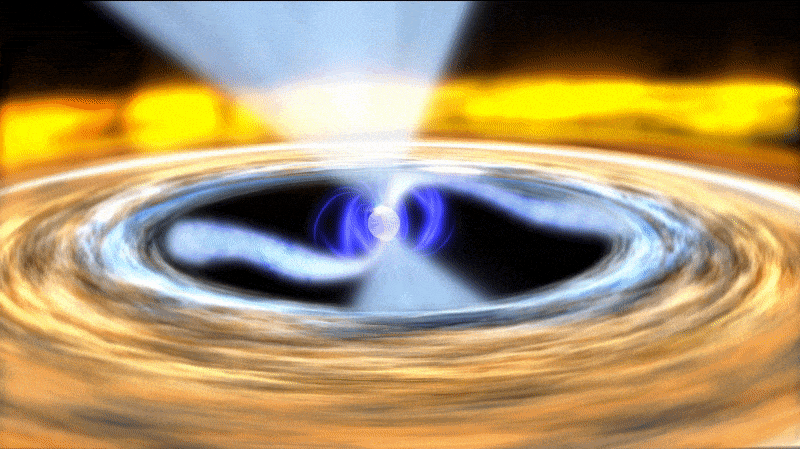
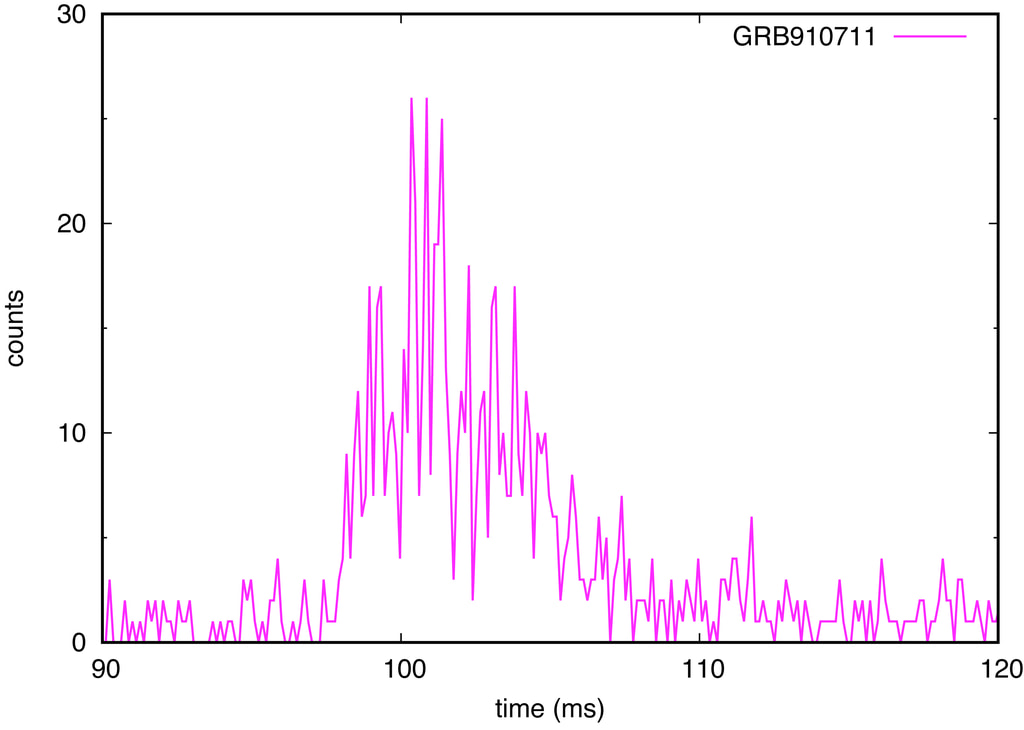
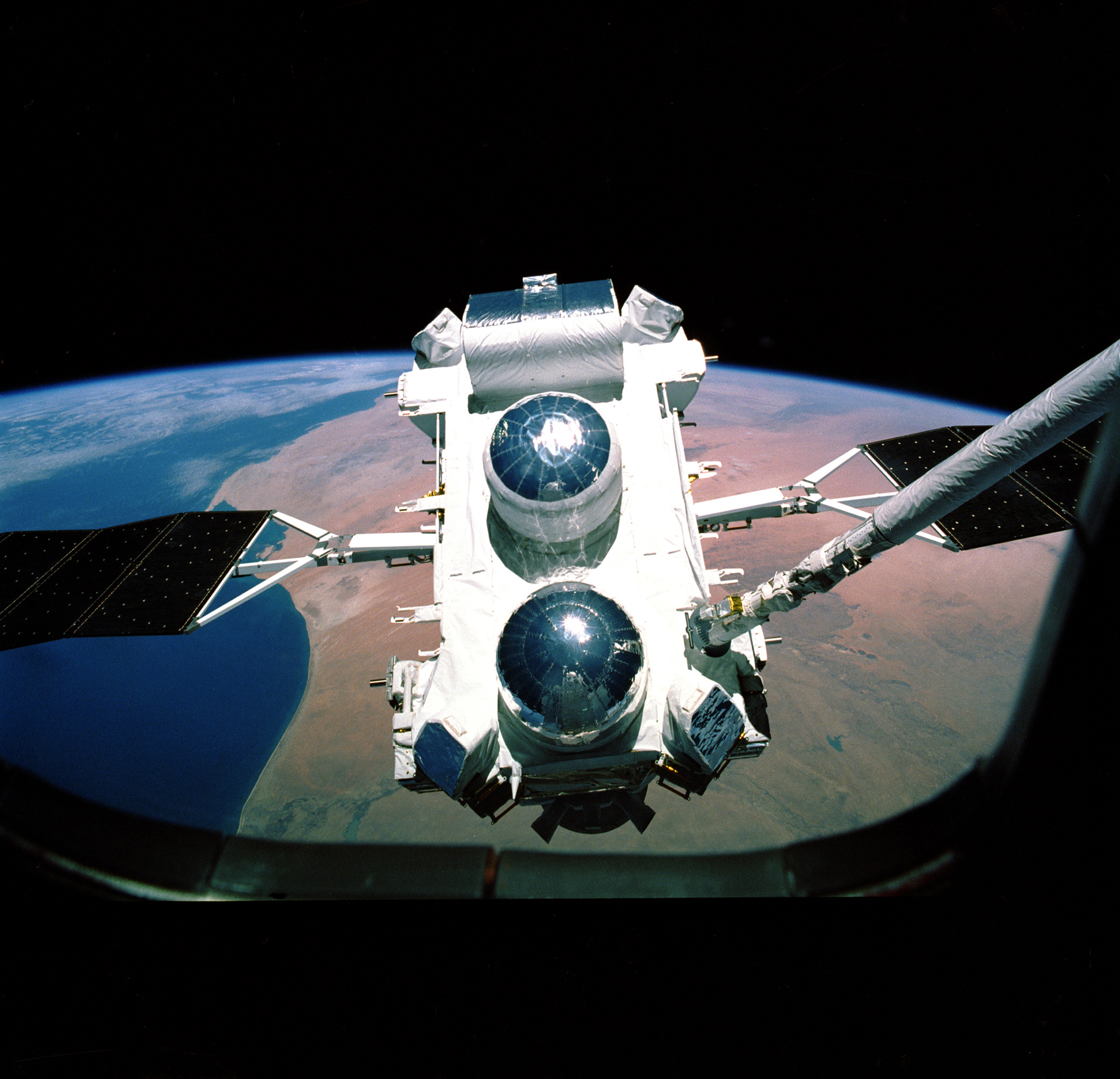
NASA’s Compton Mission Glimpses Supersized Neutron Stars
Astronomers looked for these signals in 700 short GRBs detected with NASA’s Neil Gehrels Swift Observatory, Fermi Gamma-ray Space Telescope, and the Compton Gamma Ray Observatory. They found these flickering gamma-ray patterns – called quasiperiodic oscillations – in two bursts observed by Compton’s Burst And Transient Source Experiment (BATSE) on July 11, 1991, and Nov. 1, 1993. The larger area of the BATSE instrument gave it the upper hand in finding these faint patterns.
A neutron star forms when the core of a massive star runs out of fuel and collapses. This produces a shock wave that blows away the rest of the star in a supernova explosion. Neutron stars typically pack more mass than our Sun into a ball about the size of a city, but above a certain mass, they must collapse into black holes.
Merging neutron stars power short GRBs, blasts of high-energy light that last less than two seconds. Computer simulations of gravitational waves emitted by these mergers show a sudden jump in frequency – exceeding 1,000 hertz – as the objects coalesce. These signals are too fast and faint for existing gravitational wave observatories to detect. But astronomers reasoned that similar signals could appear in the gamma-ray emission from short GRBs.
Both the Compton data and computer simulations revealed mega neutron stars tipping the scales by 20% more than the most massive precisely measured neutron star known, dubbed J0740+6620, which weighs in at nearly 2.1 times the Sun’s mass. Superheavy neutron stars also have nearly twice the size of a typical neutron star, or about twice the length of Manhattan Island.
The mega neutron stars spin nearly about 78,000 times a minute – almost twice the speed of J17482446ad, the fastest pulsar on record. This rapid rotation briefly supports the objects against further collapse, allowing them to exist just a few tenths of a second, after which they proceed to form a black hole far faster than the blink of an eye.



Related
Credits
Scott Wiessinger (KBR Wyle Services, LLC): Lead Producer
Francis Reddy (University of Maryland College Park): Lead Science Writer
Cecilia Chirenti (University of Maryland, College Park): Scientist
Peter Hammond (University of Southampton): Visualizer
Francis Reddy (University of Maryland College Park): Lead Science Writer
Cecilia Chirenti (University of Maryland, College Park): Scientist
Peter Hammond (University of Southampton): Visualizer
Please give credit for this item to:
NASA's Goddard Space Flight Center. However, individual items should be credited as indicated above.
NASA's Goddard Space Flight Center. However, individual items should be credited as indicated above.
Short URL to share this page:
https://svs.gsfc.nasa.gov/14209
Mission:
Compton Gamma-Ray Observatory
This item is part of these series:
Narrated Movies
Astrophysics Visualizations
Astrophysics Simulations
Keywords:
SVS >> Neutron Star
SVS >> Simulation
SVS >> Black Hole
SVS >> Gamma Ray Burst
SVS >> Astrophysics
SVS >> Universe
SVS >> Space
SVS >> Supernova
NASA Science >> Universe
SVS >> Sonification
https://svs.gsfc.nasa.gov/14209
Mission:
Compton Gamma-Ray Observatory
This item is part of these series:
Narrated Movies
Astrophysics Visualizations
Astrophysics Simulations
Keywords:
SVS >> Neutron Star
SVS >> Simulation
SVS >> Black Hole
SVS >> Gamma Ray Burst
SVS >> Astrophysics
SVS >> Universe
SVS >> Space
SVS >> Supernova
NASA Science >> Universe
SVS >> Sonification
